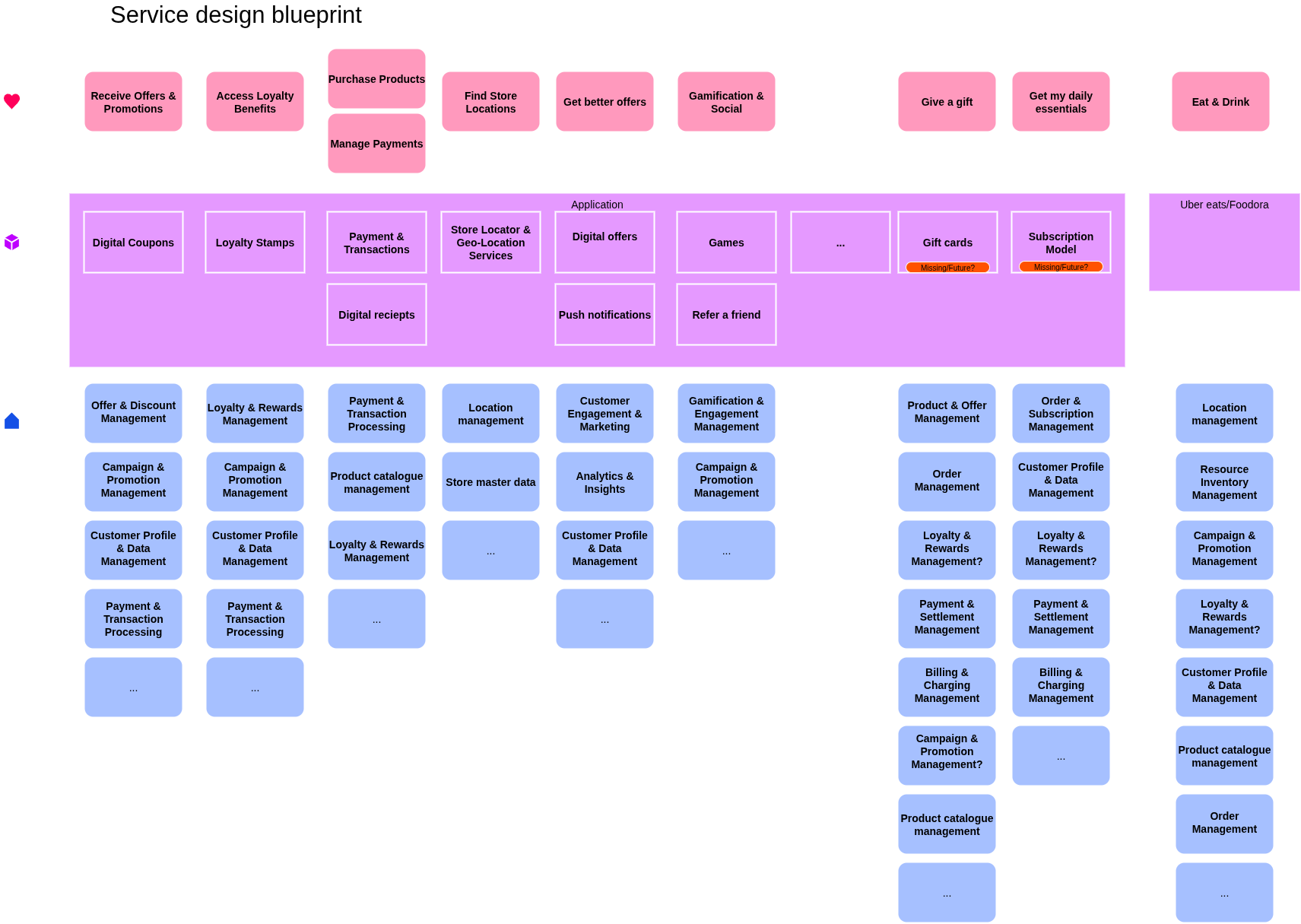Designing a compelling retail mobile experience requires more than just features—it demands a structured service design blueprint that connects customer journeys, applications, and enterprise capabilities. Using the EDGY framework, we can visualize how customer value is created by aligning experience, capabilities, and technology.
The diagram above illustrates a service design blueprint for a convenience retail mobile app. It highlights three layers of design thinking:
Customer Experience
At the top we see the customer-facing intentions—what people actually want to achieve:
- Receive offers & promotions
- Access loyalty benefits
- Purchase products & manage payments
- Find store locations
- Get better offers & gamified rewards
- Send gifts or subscribe to essentials
- Eat & drink, including integrations with delivery partners (e.g., Uber Eats, Foodora)
These intentions anchor the design around jobs-to-be-done rather than isolated features.
Application Layer
The middle layer captures application features that bring those experiences to life:
- Digital coupons, loyalty stamps, and digital receipts
- Payment & transaction services
- Store locator & geo-services
- Digital offers, push notifications, and referral programs
- Games and gamification features
- Gift cards and subscription models (notably marked as missing in this study)
This layer shows how app design must bundle transactional, promotional, and engagement features in a cohesive experience.
Capability Layer
Finally, the foundation: enterprise capabilities. These ensure the retail ecosystem can scale and adapt:
- Offer & Discount Management and Campaign Management
- Payment & Transaction Processing with catalog, loyalty, and rewards integration
- Customer Engagement & Marketing supported by Analytics & Insights
- Gamification & Engagement Management
- Order & Subscription Management with billing and charging support
- Location & Resource Inventory Management for operational execution
By making capabilities explicit, we avoid the trap of feature-only thinking. Instead, the blueprint shows how capabilities drive resilience, scalability, and future innovation.
Why This Matters
Most retail apps fail because they stop at the feature level. This EDGY-inspired blueprint makes it clear:
- Customer outcomes are the north star
- Applications translate outcomes into digital touchpoints
- Capabilities ensure long-term viability and adaptability
With this structured view, retailers can prioritize investments, identify missing capabilities (e.g., subscription management), and design experiences that truly deliver value.
Final Thoughts
The blueprint is not just a diagram—it’s a conversation tool. It helps business leaders, architects, and designers align around the same service vision.
When retailers adopt this approach, they don’t just build an app.
They build an ecosystem of loyalty, engagement, and convenience that meets customers where they are—today and tomorrow.

